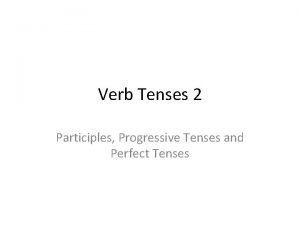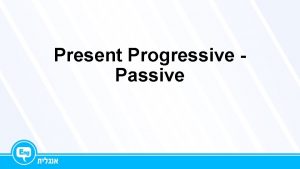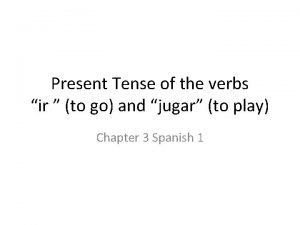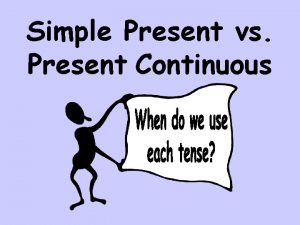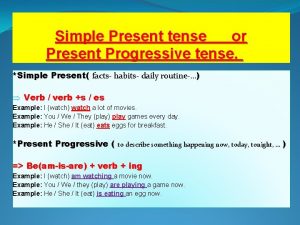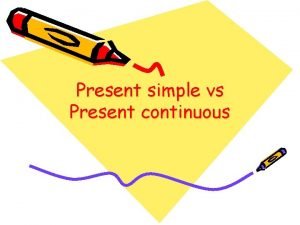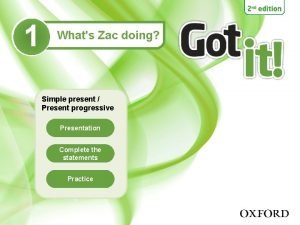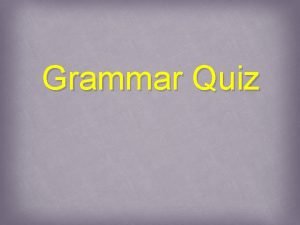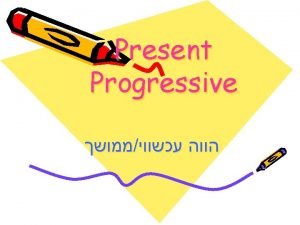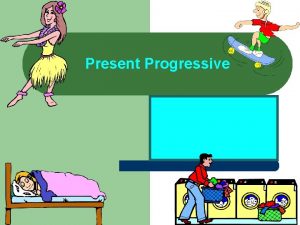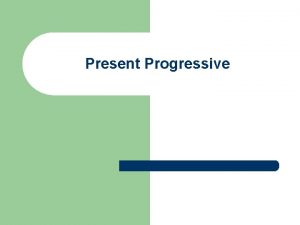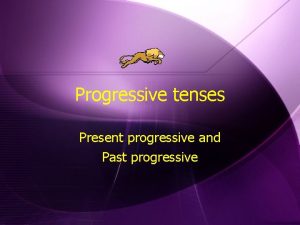Present Progressive Present Progressive When you want to









- Slides: 9

Present Progressive

Present Progressive When you want to say something is happening use the present progressive tense. This tense is equivalent to English. Por ejemplo: I am writing. ing in

Present Progressive To form the present progressive use a conjugated form of the verb estar followed by the present participle. Estarestoy estamos + estás están present participle

Present Progressive To form the present participle you drop the -ar, -er, or -ir ending and add ando for -ar verbs and iendo for -er and -ir verbs. Example: hablar- hablando hacer- haciendo escribirjugar- jugando estudiar- estudiando sacar- sacando comer- comiendo cortar- cortando

Present Progressive Example of complete present progressive: I am eating. Estoy comiendo You are playing soccer. Tú estás jugando al fútbol. Juan is studying Spanish. Juan está estudiando español.

Irregulares -Ir verbs still stem change in the present participle. However, o-ue verbs change from e-i o-u and e-ie . Example: dormir- durmiendo pedir- pidiendo repetirservir- “Grupo Y”: leer- leyendo oír- creer- ir- creyendo repitiendo sirviendo oyendo

Práctica 1. Yo no hablo. Yo no estoy hablando. 2. Mi abuela corre. Mi abuela está corriendo. 3. Tú preparas. Tú estás preparando. 4. Ellos juegan. Ellos están jugando. 5. Carmen canta. Carmen está cantando.

Práctica 6. Ud. come. Ud. está comiendo. 7. Yo miro. Yo estoy mirando. 8. Ella llama. Ella está llamando. 9. El perro salta. El perro está saltando. 10. Tú bebes. Tú estás bebiendo.

¿Reflexives? /¿Pronouns? • Place any pronoun before the conjugated form of the verb ESTAR – I am washing my hands. – ME estoy lavando las manos. • OR place any pronoun attached to the “ing” ando/iendo and an accent mark on the third syllable from the end. – Estoy lavándome las manos. • Never separate estar from ando/iendo
 Spoken word poetry allows you to be anyone you want to be
Spoken word poetry allows you to be anyone you want to be Simple present present perfect present progressive noredink
Simple present present perfect present progressive noredink Present progressive passive
Present progressive passive Past perfect tense of give
Past perfect tense of give Remember present continuous
Remember present continuous Simple present and present progressive example
Simple present and present progressive example Present simple or present continuous
Present simple or present continuous Present perfect present progressive
Present perfect present progressive Simple present or present progressive
Simple present or present progressive Grammar quiz present simple
Grammar quiz present simple

